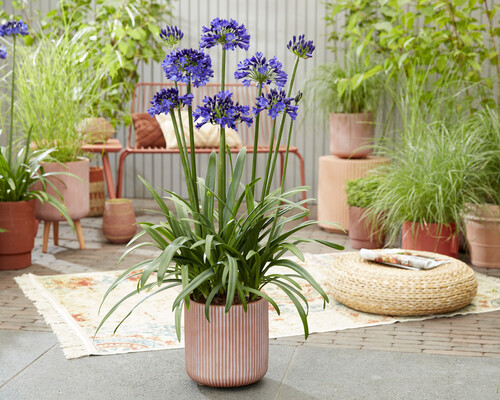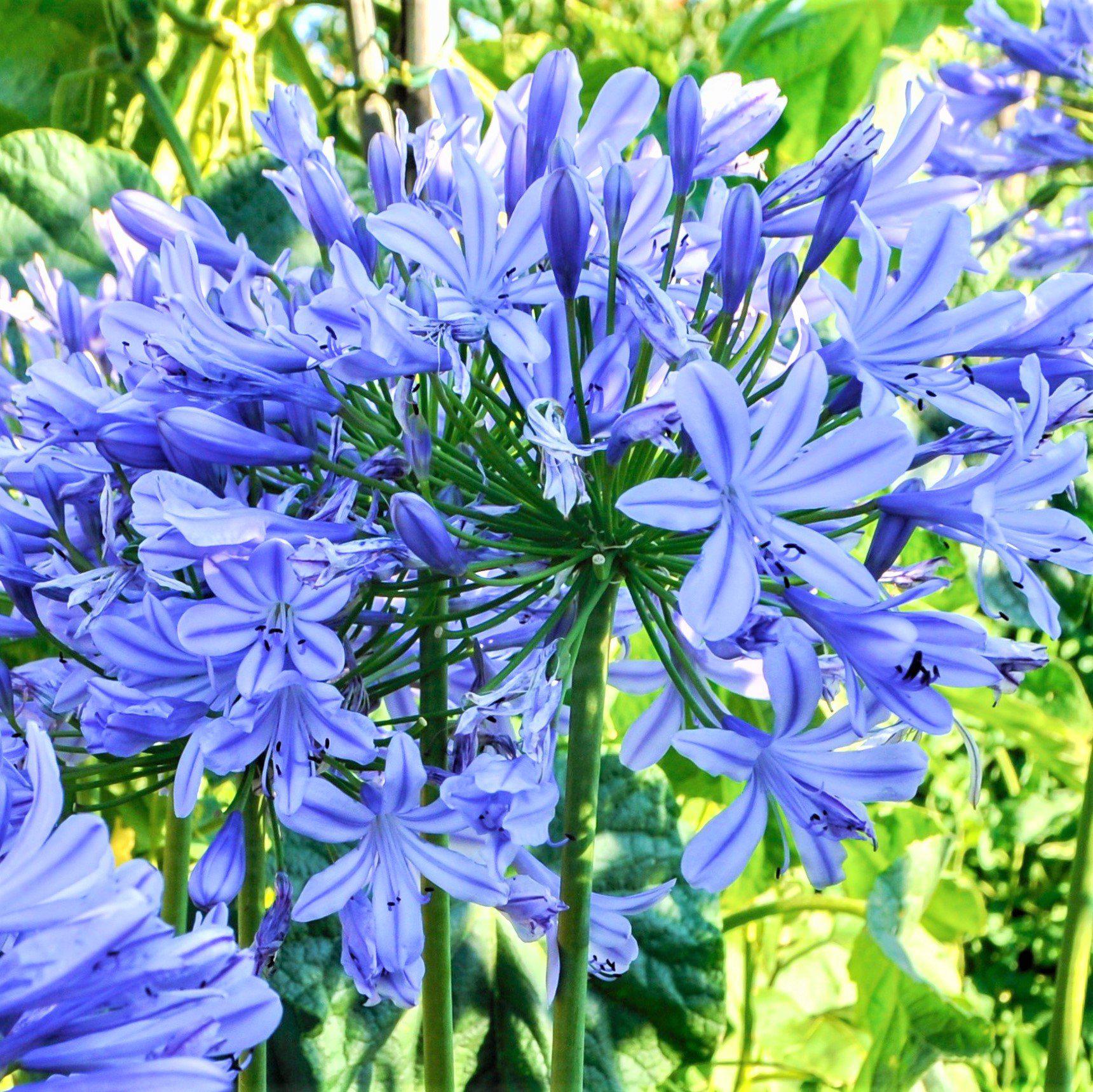Growing Agapanthus: A Total Overview to Beautiful Blooms
Growing Agapanthus: A Total Overview to Beautiful Blooms
Blog Article
Letting Loose the Secret to Successful Agapanthus Cultivation: Advice for a Flourishing Yard
In the realm of horticulture, cultivating agapanthus successfully requires a tactical approach that encompasses numerous aspects of plant treatment. By comprehending the subtleties of agapanthus farming, one can produce a setting where these plants thrive and grow abundantly.
Planting Agapanthus: Ideal Practices
When planting Agapanthus, appropriate soil preparation is crucial for making certain successful development and advancement of these gorgeous blossoms. Agapanthus, typically called Lily of the Nile or African lily, prospers in well-draining soil with a slightly acidic to neutral pH level - Agapanthus. Prior to growing, it is essential to change hefty clay soils with raw material such as garden compost or peat moss to improve drain and offer important nutrients for the plants
To grow Agapanthus, pick a location that gets complete sunlight to partial shade, as this will certainly promote healthy and balanced development and abundant flowering. Dig a hole two times the size of the plant's root round and position the Agapanthus at the very same depth it was previously expanding. Delicately backfill the hole with soil, pushing down firmly to get rid of any air pockets around the roots.
Water the freshly planted Agapanthus completely and proceed to keep the soil uniformly moist, particularly throughout the plant's active growing period. Agapanthus. Using a balanced plant food once a month can even more sustain the plant's development and blooming. By adhering to these finest methods for planting Agapanthus, you can develop a spectacular display screen of these exciting blossoms in your yard
Perfect Dirt Issues for Agapanthus
For optimal development and flowering success of Agapanthus plants, ensuring the soil problems are ideal is critical. Agapanthus favors dirt that is rich in nutrients, so including a well balanced plant food during the growing period can advertise healthy and balanced development and vivid blossoms.

Watering and Feeding Tips
To make sure healthy and balanced growth and dynamic blooms, appropriate watering and feeding strategies are vital for successful Agapanthus growing. Agapanthus plants gain from normal watering, especially throughout the expanding season. It is suggested to water deeply once a week, ensuring the dirt is wet yet not waterlogged. Throughout warm climate or in pots, even more frequent watering may be necessary to stop the soil from drying totally.
When it comes to feeding Agapanthus, a well balanced fertilizer with equal parts nitrogen, phosphorus, and potassium can be applied in the springtime to advertise healthy growth and flowering. Slow-release plant foods are ideal for giving nutrients progressively over an extended period. Prevent over-fertilizing, as this can result in excessive vegetation development at the cost of blooms.
Furthermore, including natural matter like compost right into the dirt can improve nutrient levels and boost dirt framework, aiding in the overall wellness of the Agapanthus plants. By complying with these watering and fertilizing pointers, gardeners can ensure their Agapanthus plants prosper and produce magnificent screens of blossoms.
Trimming and Deadheading Strategies
Correct this content pruning and deadheading strategies play an important function in keeping the health and wellness and looks of Agapanthus plants, enhancing the vital methods of watering and feeding for successful farming. Pruning Agapanthus includes eliminating invested flower heads, dead or yellowing fallen leaves, and overall shaping of the plant to advertise far better growth. Deadheading, the procedure of eliminating faded flowers, not just boosts the plant's look but also urges further flowering.
When deadheading Agapanthus, it is advisable to clip off the blossom stem at the base using sharp, clean shears. This process reroutes the plant's energy from seed manufacturing back into root and foliage growth, promoting a healthier and extra durable plant. Normal deadheading can prolong the blooming period of Agapanthus and protect against self-seeding, which can result in overcrowding.
In terms of pruning, Agapanthus usually advantages from a light trim after blooming to clean up the plant and motivate fresh development. Reducing the spent blossom stems and removing any kind of dead or broken foliage aids preserve the plant's vitality and overall look. However, it is important to stay clear of reducing into the crown of the plant, as this can deteriorate its wellness.

Protecting Agapanthus From Pests and Diseases
Implementing effective parasite and condition monitoring approaches is essential to protecting the wellness and vitality of Agapanthus plants in cultivation. Agapanthus are generally durable plants, yet they can still drop sufferer to various pests and conditions otherwise appropriately cared for. One usual parasite that affects Agapanthus is the Agapanthus borer, a caterpillar that passages right into the plant, creating damages to the fallen leaves and blossoms. To stop problems, routine evaluation of the plants is essential. If borers are discovered, they can be manually removed, or insecticidal soap can be made use of as a control procedure.
In addition to insects, Agapanthus are vulnerable to illness such as origin rot and fungal fallen leave areas. By remaining cautious and addressing pest and disease issues promptly, gardeners can help their Agapanthus thrive and flourish.

Conclusion
Finally, effective cultivation of agapanthus calls for proper growing techniques, excellent soil conditions, adequate watering and feeding, routine pruning and deadheading, and defense from diseases and bugs. By following these ideas and tricks, gardeners can make sure a flourishing garden loaded with beautiful agapanthus blossoms. Agapanthus. Keep in mind to preserve regular care and focus to detail to promote the health and wellness and long life of these stunning plants
When planting Agapanthus, appropriate dirt preparation is vital for making certain effective growth and advancement of these attractive flowers.Water the recently planted Agapanthus completely and look at this website continue to maintain click here to read the soil equally damp, specifically throughout the plant's energetic expanding season.For optimal growth and flowering success of Agapanthus plants, making sure the dirt conditions are suitable is important. When growing or hair transplanting Agapanthus, make certain the dirt is well-prepared to supply the required foundation for the plants to develop themselves successfully. One common bug that influences Agapanthus is the Agapanthus borer, a caterpillar that tunnels into the plant, creating damage to the fallen leaves and blossoms.
Report this page